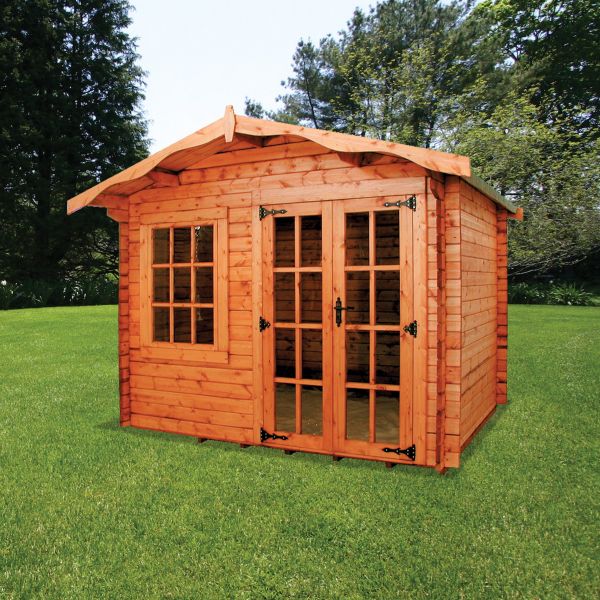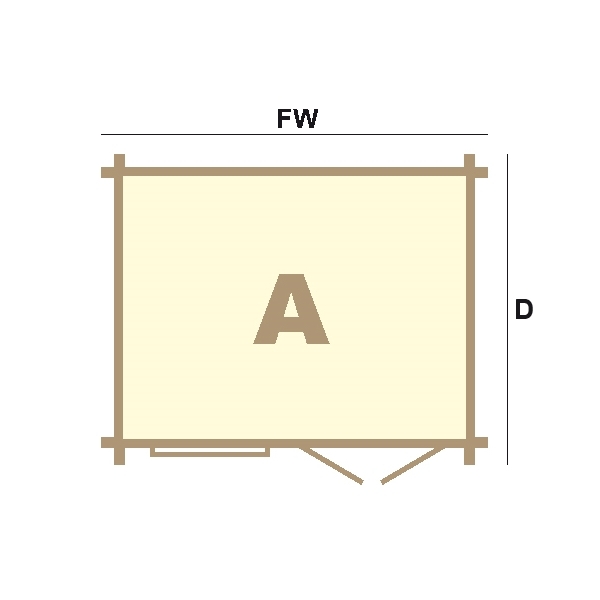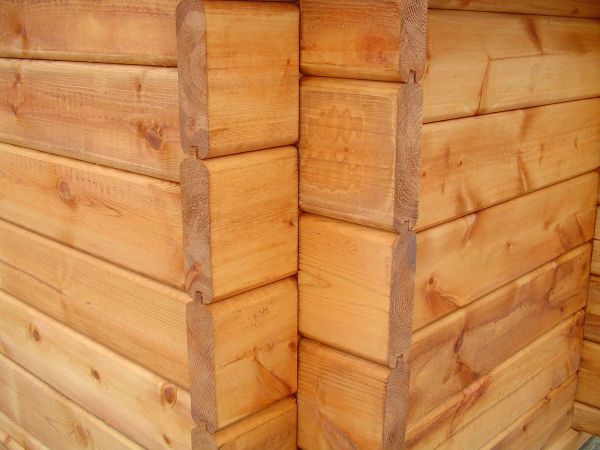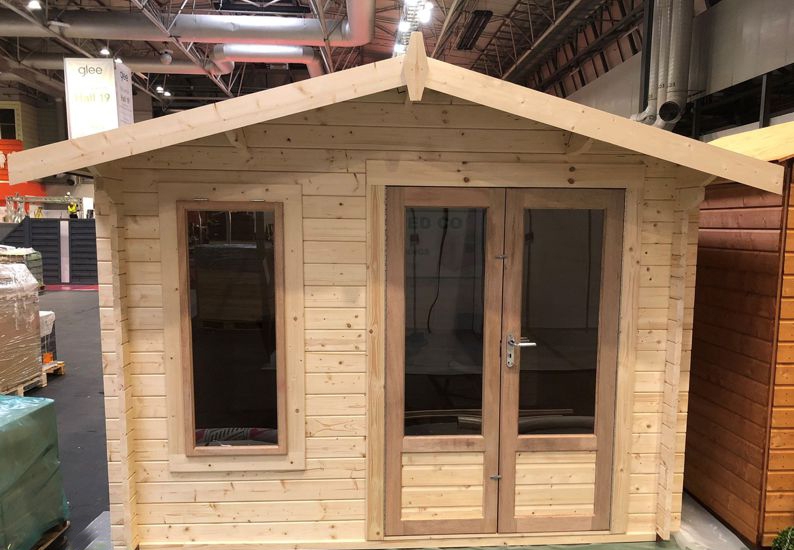Specification
- Log cabin with apex roof
- 33mm interlocking tongue and groove logs
- Floor is 15mm tongue and groove shiplap on 45 x 34mm joists
- Roof is 15mm tongue and groove shiplap on purlins with a diameter of 34 x 120mm
- Eaves height of 2.0m
- Joinery quality hardwood double door with a mortice lock
- Joinery quality hardwood window opening
- 400mm roof canopy
- Standard toughened glass
- Supplied untreated in kit form, windows and doors are pre-hung in a frame
- Reversible window and door positions
Size Code: Estimate size in feet, for example 1008 = approximately 10ft x 8ft.
Size FW x D x H: Front Width x Depth (front to back) x Height (top of the apex) in m (metres). Non-standard sizes are obtainable.
Internal Size: Nominal 0.3m has been taken off log size on the front width and depth to give an estimated internal size. This is to allow for the log overhang (100mm) in each corner and the thickness of logs (33 mm).
Windows: Amount of hardwood opening windows. Extra windows can be added on request.
Door W x H: Width x Height of the door in mm (millimetres). Please note that the door gap is moderately smaller than the door itself.
Floor Plan: Select by size from the above table. These show the measurements of the floor along with the joins and the direction of the floor joists. Please note that the direction of the floor joists can change, so this must be checked before an order is placed, if critical.
Assembly Guides: Select by size from the above table. Please note that due to the amount of sizes, models and variations that we offer, the assembling guide may not be 100% specific to your log cabin, but it should provide you with all necessary principles.
Eaves Height: Internal height at the stunted point of the roof (sides).
Lock: This log cabin comes as standard with two keys and a mortice lock.
Roof cover: Supplied with high quality polyester-based felt roofing.
Log Movement: Due to the construction of our log cabins, over time the logs will start to settle down and move when changing weather conditions, due to the natural expansion and contraction of the timber. Especially in the first year after assembling. If any of the logs which are being held in place, have gaps appear between the logs as the opposite ones move, then the obstruction should be removed as soon as possible and the logs should normally close back up when a downward pressure is then applied to the roof of the cabin. For this reason, we do not recommend insulating log cabins. The expansion and contraction of the timber that causes this issue can be limited with the right amount of timber treatment.








